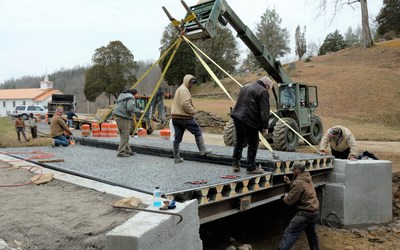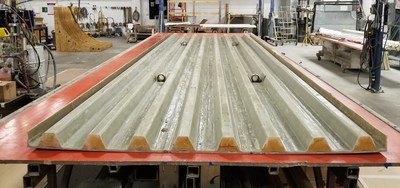Thursday, June 27, 2024
Monday, June 24, 2024
Thursday, June 20, 2024
Applications of FRP Grating from Ocean to Sky
- Light weight and high strength, density 4 times not as much as steel and 11/2 times to aluminum.
- High temperature resistance, open flame resistance, and excellent thermal conductivity. The maximum temperature of fire resistance can reach 1400 degrees, and it is almost non-conductive, suitable for application in some large factories.
- Wear resistance and aging resistance, long service life, generally more than 30 years.
- High alkali resistance and corrosion resistance. For example, some places with poor corrosive environment, such as chemical plants and sewage treatment plants, choose to use grid plates to replace the previous metal grid plates.
- Excellent non-conductive, non-slip measures and extremely high safety performance.
- A product with simple process, high economic benefit and promising development prospects.
Friday, June 14, 2024
A review on the mechanical properties of synthetic and natural fiber-reinforced polymer composites and their application in the transportation industry
Tuesday, June 11, 2024
Saturday, June 8, 2024
13th International Conference on Fiber Reinforced Polymer 20-21June 2024- Dubai, United Arab Emirates
Keywords:
Fiber-reinforced Polymer (FRP)
Composite materials
Polymer matrix
High-strength fibers
Lightweight
Strength
Durability
Structural applications
Engineering
Materials science
Civil infrastructure
Aerospace
Automotive
Manufacturing techniques
Processing methods
Fiber architecture
Friday, June 7, 2024
Materials & Processes: Fibers for composites
Thursday, June 6, 2024
Subscribe to:
Comments (Atom)
🏆 FRP Trailblazer Award Introduction The FRP Trailblazer Award is a prestigious international honor established to recognize outstanding r...

-
Vadodara, Gujarat-Everest Composites Pvt. Ltd. (ECPL), manufacturers of composites products since 1991, is proud to announce the launch of...
-
The global construction industry is undergoing a profound transformation, with sustainability taking center stage in almost every new proj...
-
"Japan Alpaca Fiber Market to Reach USD 705.1 Billion by 2035: Growth Drivers & Future Trends" The Japan Alpaca Fiber market i...













